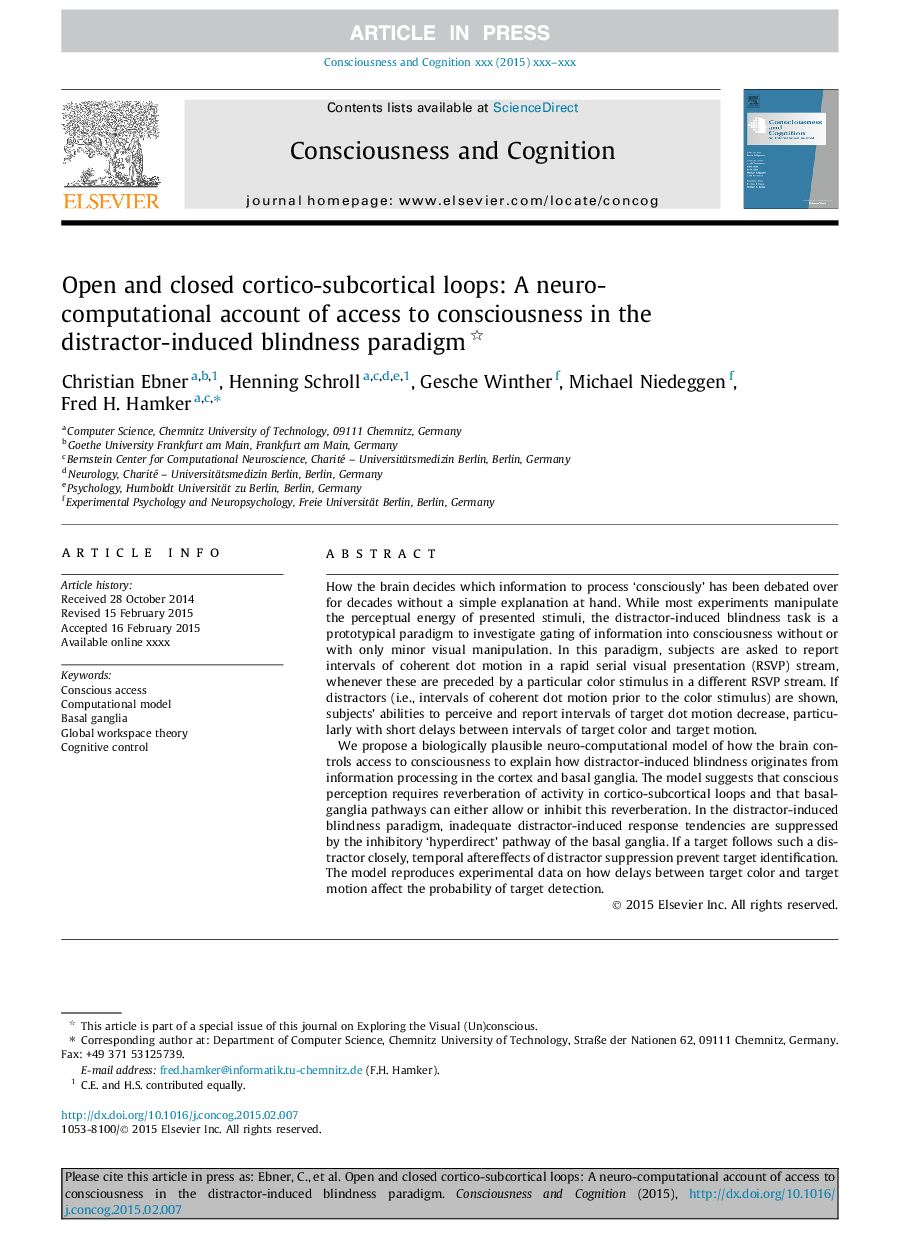| Article ID | Journal | Published Year | Pages | File Type |
|---|---|---|---|---|
| 7289197 | Consciousness and Cognition | 2015 | 13 Pages |
Abstract
We propose a biologically plausible neuro-computational model of how the brain controls access to consciousness to explain how distractor-induced blindness originates from information processing in the cortex and basal ganglia. The model suggests that conscious perception requires reverberation of activity in cortico-subcortical loops and that basal-ganglia pathways can either allow or inhibit this reverberation. In the distractor-induced blindness paradigm, inadequate distractor-induced response tendencies are suppressed by the inhibitory 'hyperdirect' pathway of the basal ganglia. If a target follows such a distractor closely, temporal aftereffects of distractor suppression prevent target identification. The model reproduces experimental data on how delays between target color and target motion affect the probability of target detection.
Related Topics
Life Sciences
Neuroscience
Cognitive Neuroscience
Authors
Christian Ebner, Henning Schroll, Gesche Winther, Michael Niedeggen, Fred H. Hamker,
